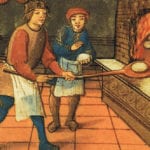 Weird Stuff
Weird Stuff  Weird Stuff
Weird Stuff  Mysteries
Mysteries 10 Tragic Disappearances and Deaths in Joshua Tree National Park
 History
History 10 Ways Childhood Really Sucked in the Old West
 Music
Music 10 Name Origins of Famous Bands from the 1990s
 Religion
Religion 10 Biggest Turnarounds by the Catholic Church
 Weird Stuff
Weird Stuff 10 Unbelievable Times Laws Had Unintended Consequences
 Humans
Humans Ten Historic Women Who Deserve Way More Credit Than They Got
 Movies and TV
Movies and TV 10 Films That Spawned Major Lawsuits
 History
History Ten Times Towns Were Wiped Off the Face of the Earth
 Creepy
Creepy 10 of the Most Disturbingly Haunted Public Houses in the UK
 Weird Stuff
Weird Stuff 10 Niche Subcultures That Are More Popular Than You Might Think
 Mysteries
Mysteries 10 Tragic Disappearances and Deaths in Joshua Tree National Park
 History
History 10 Ways Childhood Really Sucked in the Old West
Who's Behind Listverse?

Jamie Frater
Head Editor
Jamie founded Listverse due to an insatiable desire to share fascinating, obscure, and bizarre facts. He has been a guest speaker on numerous national radio and television stations and is a five time published author.
More About Us Music
Music 10 Name Origins of Famous Bands from the 1990s
 Religion
Religion 10 Biggest Turnarounds by the Catholic Church
 Weird Stuff
Weird Stuff 10 Unbelievable Times Laws Had Unintended Consequences
 Humans
Humans Ten Historic Women Who Deserve Way More Credit Than They Got
 Movies and TV
Movies and TV 10 Films That Spawned Major Lawsuits
 History
History Ten Times Towns Were Wiped Off the Face of the Earth
 Creepy
Creepy 10 of the Most Disturbingly Haunted Public Houses in the UK
10 Swashbuckling Mercenaries Who Ravaged Medieval Europe
The late medieval period was a chaotic time in history. England and France were engaged in the Hundred Years’ War, and Italian city-states were fighting one another for supremacy in the peninsula. In the absence of permanent standing armies, combatants relied on mercenary companies to do the fighting for them. The temporary peace brought about by the Treaty of Bretigny in 1360 unleashed thousands of unemployed men-at-arms looking to pillage to sustain themselves. Many coalesced around charismatic and intrepid leaders into what became known as “free companies.” In Italy, they were known as condottieri. This word is derived from condotta, meaning “contract,” the instrument by which they put themselves in the service of the highest bidder. These soldiers of fortune were the late medieval version of Mafia bosses, making their living with murder, extortion, and terror.
10Roger de Flor
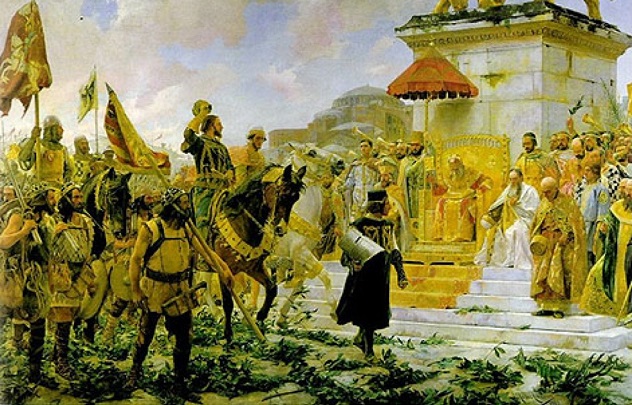 Roger de Flor was born in the then-Catalonian province of Brindisi, Italy in 1267. As a boy, he went out to sea and eventually became a Knight Templar. He took advantage of the Muslim capture of Acre in 1291 by robbing the refugees, and when his activities were exposed, he was expelled from the Templars. Fleeing to Genoa, he became commander of a force of Spanish mercenaries called Almogavares. Their name was derived from the Arab al-mogauar, meaning “one who devastates,” and they were the descendants of the Iberians who accompanied Hannibal into Italy. In the seventh and eighth centuries, they engaged in guerrilla operations against the Muslim invaders of Spain.
Roger de Flor was born in the then-Catalonian province of Brindisi, Italy in 1267. As a boy, he went out to sea and eventually became a Knight Templar. He took advantage of the Muslim capture of Acre in 1291 by robbing the refugees, and when his activities were exposed, he was expelled from the Templars. Fleeing to Genoa, he became commander of a force of Spanish mercenaries called Almogavares. Their name was derived from the Arab al-mogauar, meaning “one who devastates,” and they were the descendants of the Iberians who accompanied Hannibal into Italy. In the seventh and eighth centuries, they engaged in guerrilla operations against the Muslim invaders of Spain.
In 1303, the Byzantines recruited Roger, who was then in the service of the king of Aragon, to help fight the Ottoman Turks who had just wrested Bithynia from the Empire. In Constantinople, Roger married a niece of the Emperor Andronicus II Palaeologus and was made a grand duke. With 1,500 knights and 4,000 Almogavares called the Catalan Company, Roger won battles against the Turks, but he also pillaged and looted the Byzantine inhabitants of Anatolia in what is now Turkey. This led the authorities to denounce him as nothing better than a brigand, but success got into Roger’s head, and he was already dreaming of carving his own dominion in Anatolia.
Emperor Michael IX became convinced that Roger and his undisciplined Almogavares must be destroyed. In 1305, Roger was lured to Adrianople for a banquet hosted by Michael. There, Roger was ambushed by another mercenary force and killed, as were 130 of his men. The remnants of the Catalan Company ravaged the countryside in revenge before settling in Greece and founding the Duchy of Athens in 1311.
Explore life in the so-called dark ages with The Middle Ages: Everyday Life in Medieval Europe at Amazon.com!
9Bascot de Mauleon
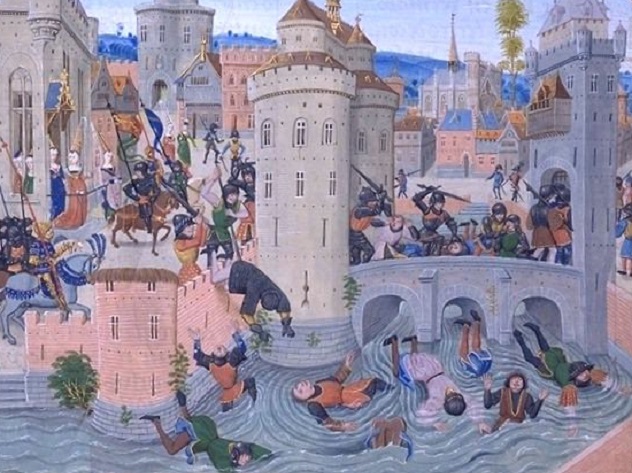
Bascot de Mauleon was captain of a group that marched into Burgundy with freebooters of various nationalities. Mauleon had his first experience of battle at Poitiers. Later, he went to Prussia with the Count of Foix, crushing the peasant rebellion of the Jacquerie upon their return to France.
Mauleon estimated that there were about 12,000 men with him in the Loire region. This formidable force took the castle of Brignais from the king and defeated the constable of France, amassing such wealth in ransoms and booty that the pope in Avignon feared for his safety.
Technically, Mauleon was fighting for the king of England, but as an independent freebooter, his main interest was money. Before he made it to the big time, Mauleon remembered, “Sometimes I have been so thoroughly down that I hadn’t even a horse to ride, and at other times fairly rich, as luck came and went.” Mauleon’s rags-to-riches tale was recorded by French chronicler Froissart, with whom had a chance meeting at a hostel in the Pyrenees. Froissart recalled “He arrived with plenty of followers and baggage . . . He had as many pack horses with him as any great baron, and he and his people took their meals off silver plate.” Not a bad lifestyle for a highwayman.
8Duke Werner von Urslingen
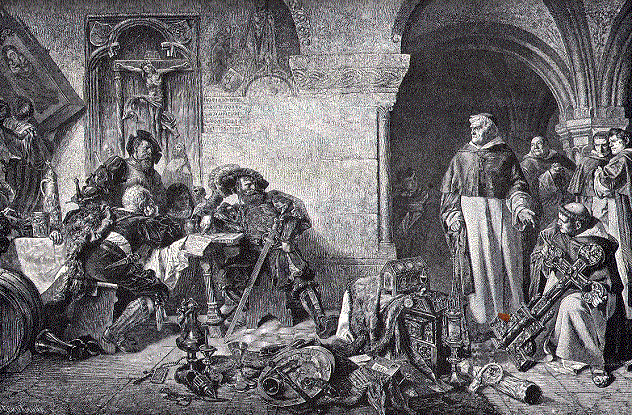
Taking upon himself the title of “Duke,” Werner von Urslingen had stitched onto his doublet the motto “the enemy of pity, of mercy, and of God,” and he lived up to it in the most horrific ways possible. Werner’s modus operandi was invading peaceful regions and robbing, raping, and killing the inhabitants before burning their property. He trumpeted his atrocities to the authorities and threatened more of the same unless he was paid, extorting vast sums from Siena, Perugia, Florence, and Bologna. In 1339, Werner and his band were denounced as “a plague of society.”
Werner founded the Great Company in 1342. At the height of its power, it numbered 6,000 men, mainly armored cavalry. Werner imposed strict discipline and a code of laws upon his men, including the equal division of their income. Later mercenary armies sought to model themselves after the powerful Great Company.
In 1347, Werner supported Queen Joanna I of Naples, the sister-in-law of King Louis I of Hungary, after Louis invaded Naples to avenge the murder of his brother. Werner helped Joanna return to Naples and defended her against the opposing condottiere. On Joanna’s behalf, Werner attacked the baronage of Meleto, raking in half a million florins’ worth of booty. Eventually, both Werner and Wolfart were bought off, and Werner returned to Germany with his loot.
7Conrad Of Landau
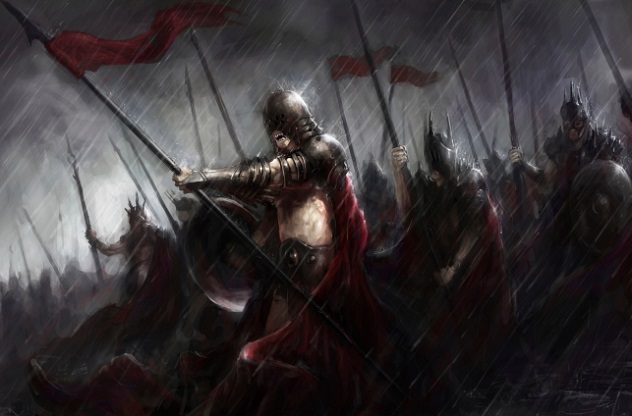
The German Conrad of Landau took command of the Great Company in 1354, operating in the regions of Tuscany, Umbria, the Romagna, and Lombardy. He held entire cities for ransom and reaped massive profits. As Conrad straightforwardly explained to the papal legate before he invaded church lands, “It is our custom to rob, sack, and pillage whoever resists. Our income is derived from the funds of the provinces we invade; he who values his life pays for peace and quiet from us at a steep price.”
On at least one occasion, Conrad got a taste of his own medicine when he was ambushed by the Florentines on his way to Siena to fight Perugia. Conrad was unhorsed and wounded, his force routed, and angry locals picked off the remnants of the Company and looted them of their goods. It was only a temporary setback, though, and Conrad continued to rake in vast revenues from extortion. His profits enabled his father, who remained in Germany, to buy back the family castle and lands they had lost to debt years earlier.
The Great Company was eventually hired by the Visconti rulers of Milan to drive away the rival White Company of Albert Sterz, which was enroaching on Milanese territory. In 1363, the two companies met at Canturino. At first, Conrad held his line, but his Hungarian contingents suddenly refused to fight their fellow Hungarians in the opposing army. Their desertion tipped the scales in the White Company’s favor, and Conrad was killed in the ensuing battle.
6Albert Sterz
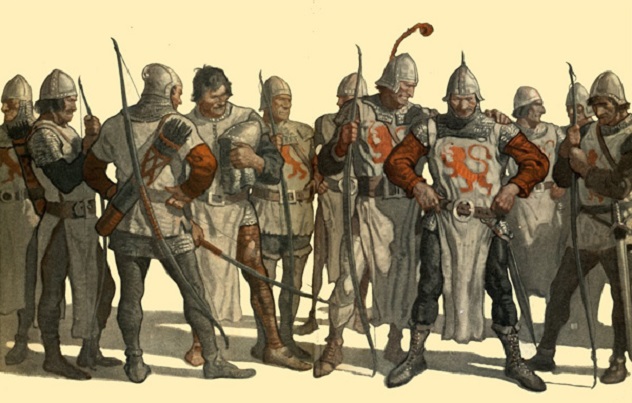
The most infamous brigand group of all is the White Company, founded by the German Albert Sterz. It got its name from the white surcoats worn by its troops and the white banners they flew. Under Sterz, the Company was unmatched in efficiency. Its 3,500 horsemen and 2,000 infantry were impeccably organized and well equipped. It even had engineers who laid mines and built scaling ladders and siege towers in its ranks.
In 1360, Sterz moved the Company to Italy, that fertile field of constantly warring city-states. Along the way, he recruited an English knight named John Hawkwood, who swiftly rose through the ranks due to his ability as a negotiator. Sterz soon had reason to regret his decision. His men, impressed with Hawkwood’s leadership, deposed him and gave the command over to the Englishman. The jealous Sterz sulked, biding his time for a chance at payback.
The Company drew up a contract with Pisa to attack its rival, Florence. The city was prepared, however, and Hawkwood’s attack stalled. Sterz’s moment had arrived. He suddenly changed sides, carrying men loyal to him over to the Florentines. The White Company disintegrated, and Hawkwood was left with only 800 men. After the war, Sterz took the remnants of the White Company and merged them with the group of fellow German condottiere, Hannekin Baumgarten. The new force, called the Company of the Star, enabled Sterz to inflict a crushing defeat upon his rival, Hawkwood.
5Alberico de Barbiano
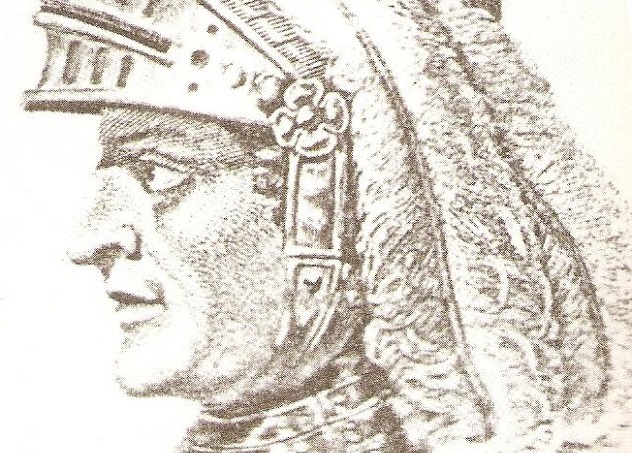
Alberico de Barbiano, a native of Cotignola in Romagna, began his career as a captain in the service of Milan. Afterward, he was employed by Florence, Venice, Naples, and the papacy. Alberico’s most infamous moment came in 1377, when he participated in the horrific Massacre of Cesena, a town not very far from his own home, as captain of the forces under Cardinal Robert of Geneva (later the anti-pope Clement VII). Ordered by Pope Gregory XI to subdue the rebellious towns of Romagna, Cardinal Robert employed Breton mercenaries, “the most cruel and bestial seed of France.” Even after surrendering their weapons, the inhabitants of Cesena were slaughtered in a three-day bloodbath. The piles of corpses on the town square were left to be eaten by dogs.
In 1378, Alberico formed the Company of St. George. Unlike previous companies, it was composed entirely of Italians who had sworn “hatred and eternal enmity” of all foreigners. Alberico turned against Clement VII and defeated his force of Bretons on behalf of Pope Urban VI, who proclaimed that Italy was now “free of barbarians.” But the anti-foreigner, nationalistic-sounding sentiments were just empty bombast. As soon as Alberico kicked out the Bretons, he began plundering Italian towns in Tuscany. His new band, the Company of the Hook, included Germans, Hungarians, and perhaps inevitably, Bretons.
At the end of the 14th century, Alberico fought in the wars between Florence and Milan, switching sides as it pleased him. He served Naples in the twilight of his career and died in 1409. Alberico is credited with such military innovations as improved armor and aggressive battlefield tactics, particularly the cavalry charge. His practice of recruiting troops from his own feudatories in Romagna, resulting in greater cohesion, is seen by some as a precursor to the ultimate unification of Italy in the 19th century.
Get free shipping, thousands of movies, and millions of streaming songs with a FREE trial of Amazon Prime at Amazon.com!
4Muzio And Francesco Sforza
 Muzio Attendolo was the first prominent member of the family that was destined to rule Milan. He hailed from the village of Cotignola in Romagna and served under the company of Alberico de Barbiano before striking out on his own. Alberico called him Sforza, meaning “force,” and as an independent condottiere, he made it his nom de guerre.
Muzio Attendolo was the first prominent member of the family that was destined to rule Milan. He hailed from the village of Cotignola in Romagna and served under the company of Alberico de Barbiano before striking out on his own. Alberico called him Sforza, meaning “force,” and as an independent condottiere, he made it his nom de guerre.
In 1398, he took up employment with the Visconti rulers of Milan but soon departed to fight for Florence and then Ferrara. In 1412, Naples acquired his services, and Muzio became constable of the kingdom. He went through changing fortunes during the chaotic reign of Queen Joanna II, alternately rewarded with lands and offices and being imprisoned and tortured. In 1424, Muzio drowned in a river while on a campaign against a fellow condottiere.
Like the fictional Michael Corleone, Muzio’s son Francesco took up his father’s mantle. He proved to be the most successful mercenary captain of the 15th century. Demonstrating the fickle nature of alliances as far as condottieri were concerned, Francesco served the Viscontis against Venice and then Venice against the Viscontis. At first, Francesco attacked the pope, but then he turned around and defended him. To keep Francesco permanently on Milan’s side, Duke Filippo Visconti married him to his only daughter in 1441. Expecting to succeed as duke on Filippo’s death, Francesco was preempted when the Milanese declared themselves a republic. Francesco besieged Milan and took the title by force in 1450. He wasn’t named Sforza for nothing.
3Rodrigo de Villandrando

Many mercenaries were not averse to robbing their own employers. This was the case with Rodrigo de Villandrando, one of the greatest mercenaries of his era. Rodrigo was born in Castile in 1380. Traveling to France in pursuit of a military career, he first joined the mercenary army of Amaury de Severac and the Burgundians.
Rodrigo formed his own mercenary company in 1420 and switched sides, offering his services to the French Dauphin Charles. This did not deter him from extorting money from the cities and estates of Languedoc and pillaging the countryside, all part of Charles’s domain. Charles ordered him to stop and attack the English instead, but Rodrigo refused and proceeded to Toulouse, where he recruited more men. He did eventually attack English-held Bordeaux and was subsequently pardoned by Charles. In another battle at Anthon, his 400 men defeated the Burgundians, one of whom squeezed himself into a hollow tree in an effort to hide. He was unable to extricate himself due to his armor, and his skeleton was only discovered when the tree was cut down in 1672.
At the peak of his power, Rodrigo commanded 10,000 men. He exacted ransoms on nobles and demanded “protection money” from local people if they wanted to be spared from murder and pillage. His violent forays in Gascony earned him the title “Emperor of Pillagers.” Enriched by his business, Rodrigo finally retired in the 1440s and returned to his native Castile. He willed all his wealth to a monastery and died in 1457.
2Arnaud de Cervole
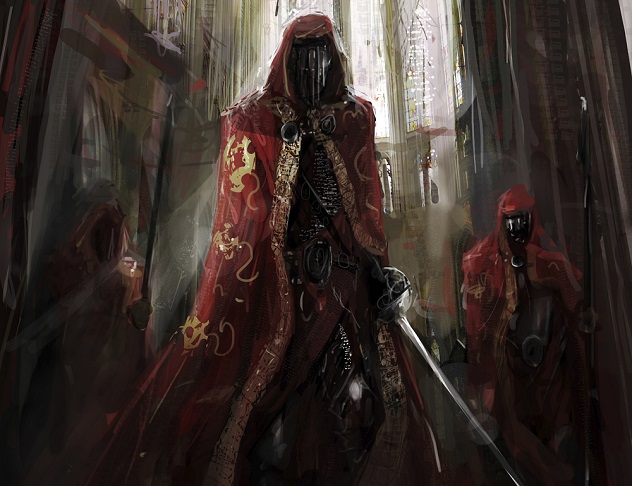
Born into a minor noble Gascon family, Arnaud de Cervole was the archpriest of Velines in the diocese of Perigueux. Being a man of God didn’t stop him from getting mixed up “with brigands and men of base extraction.” He was deprived of his benefice by the bishop of Bordeaux as a result, so he decided to take on brigandage full-time. His specialty was stealing castles. At one time, Arnaud and his band seized three castles in Angouleme as security until their employer paid their wages. The French crown charged him with theft when he took over a castle in Normandy, though he was then in the service of the French King Jean II.
With the capture of Jean II at Poitiers, Arnaud lost his employment and turned to pillaging, establishing a protection racket in the wealthy and peaceful region of Provence. Approaching Avignon, he caused the pope to quake in terror and succumb to his shakedown. Froissart relates “He entered Avignon with most of his followers by friendly agreement, and was received with as much respect as if he had been the king of France’s son, and dined several times with the pope and the cardinals. All his sins were remitted him and when he left he was given 40,000 crowns [20,000 gold florins] to distribute among his companions. The company left the district but still remained under the command of the Archpriest.”
Shifting his operations to Burgundy, Arnaud snatched one castle after another until he was bought off by the count for 2,500 gold francs. In 1365, Pope Urban V recruited Arnaud to lead a crusade against the Turks, but the pope’s real purpose was to move the freebooters away from the Rhone region. Arnaud’s army reached Lyons but refused to go on. Unfed and unpaid, the men got into a dispute with Arnaud, which ended in his murder.
1Sir John Hawkwood
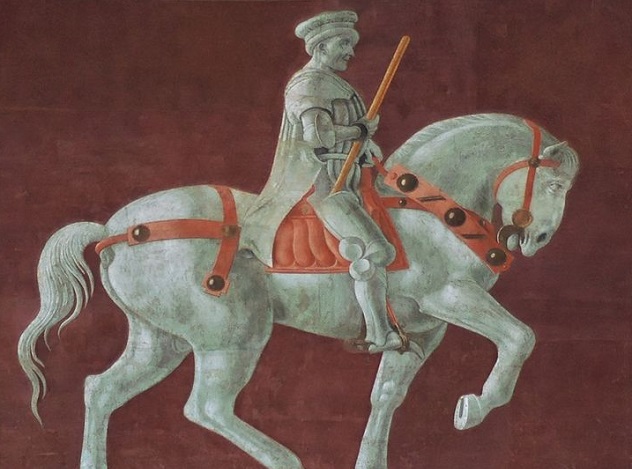
Despite his career of leading the murderous White Company, Sir John Hawkwood died a fairly rich man and was even honored by an equestrian fresco in the Florence Cathedral. Indeed, the memorial was a personal affront to Victorian author Ferdinand Gregorovius. “Florence, who denied Dante a resting place, erected a noble monument to a robber,” he lamented.
Born to a minor Essex landowner, Hawkwood left for France to fight for Edward III when he was 18. He was knighted for his part in the English victory at Poitiers, but after the Treaty of Bretigny, he was left a poor knight without a job. He joined the Free Companies to support himself.
As a soldier of the king, Hawkwood was an unknown, but upon turning to freelancing, he achieved astounding success. Seeking his fortune in the medieval snake pit of Italy, Hawkwood became leader of the White Company. The Company became the terror of Italy, gaining a reputation as “perfidious and most wicked.” The only good thing that could be said for them was that “they did not mutilate or roast their victims like the Hungarians.” The local populace called Hawkwood’s force “devils in human shape.”
Over the next 30 years, Hawkwood’s business of murder, pillage, and blackmail prospered. His fighting skills were coveted by such clients as the pope, Florence, Milan, Pisa, and Perugia. Hawkwood fought for them all, and because his only loyalty was to money, he betrayed them all when a juicier offer presented itself. Gold florins flowed so freely into Hawkwood’s coffers that he rivaled banks and international trading houses. The White Company had to employ lawyers and notaries to keep records of bribes and ransoms and draw up contracts. Accountants and secretaries divided the plunder among the troops, who in turn sold their share through outside brokers.
Sir John became so influential in Italian politics that he was called upon to arrange the marriage of Edward’s third son, Lionel, to the daughter of the Duke of Milan. He himself married the 17-year-old daughter of the duke when he was 57. It was Florence who offered Hawkwood the richest rewards, however, and he ended his days as a general of the Florentines, having been instrumental in the creation of their republic. At his death in 1394, Sir John had made his reputation as “the ablest military commander of the Middle Ages.”
My main interests are history and chess.








